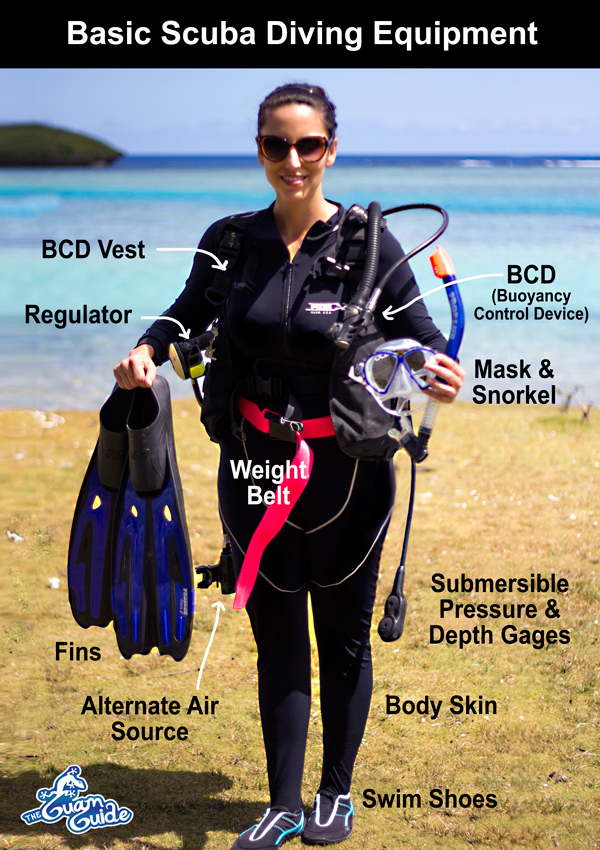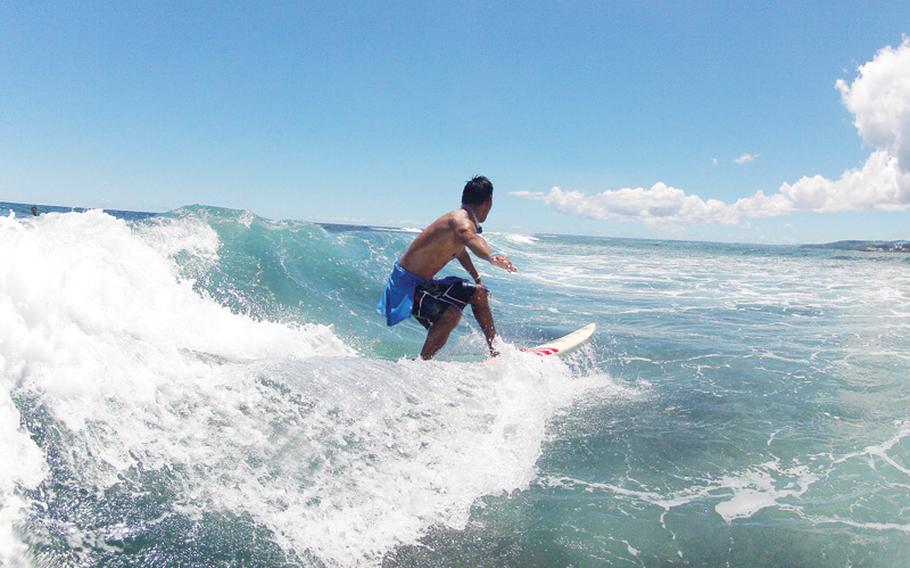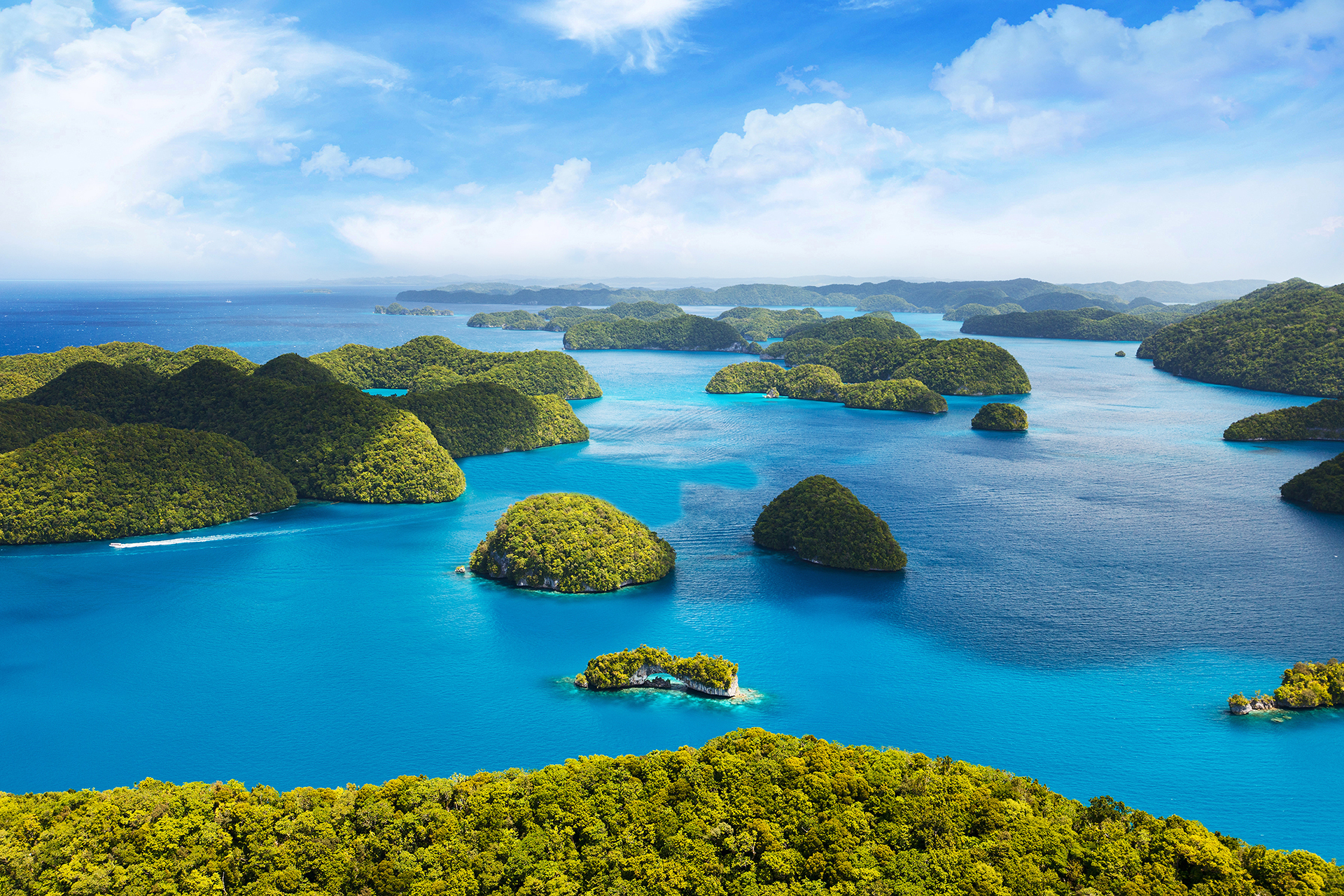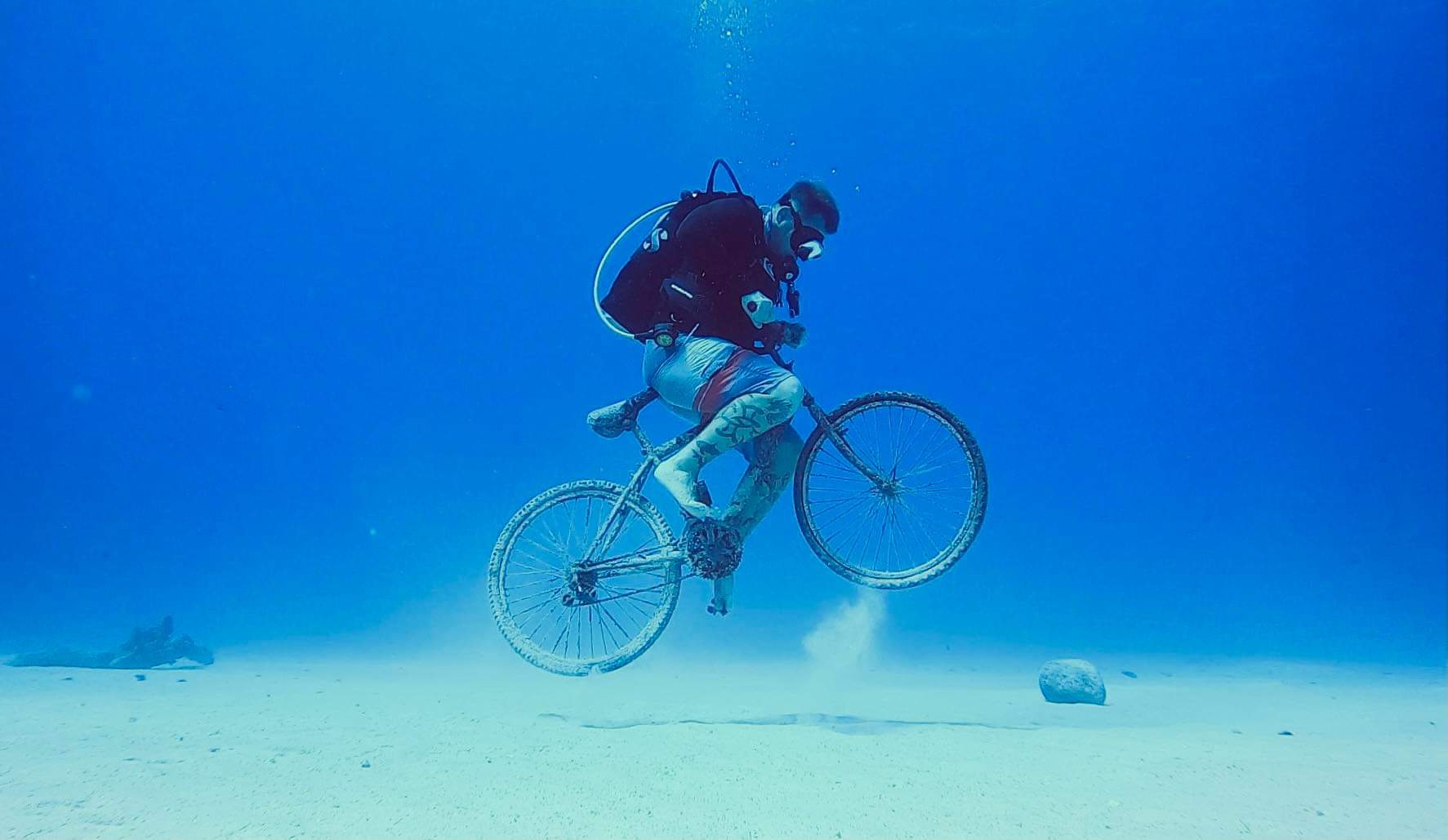Getting dive certification can be an overwhelming thought for the beginner diver. However, Guam is one of the easiest and least expensive places to get your certification, so what are you waiting for? Follow our step-by-step guide and start discovering the 12 Best Dives on Guam.
STEP 1: REGISTER
Register for a PADI Open Water Dive Course at any PADI resort or dive center such as MDA. This begins your primary education in dive equipment, procedures, and safety. You have the option of learning in a classroom with other students or online at your convenience. Micronesian Divers Association (MDA) offers PADI courses online so you can learn from the convenience of your home. Unfortunately, this course isn’t available on mobile devices or tablets just yet, so you’ll need a laptop or desktop computer and about a week or two to finish the course.
STEP 2: TAKE THE COURSE
The PADI Open Water Diver certification qualifies you to dive independently, procure air fills and scuba equipment, and plan, conduct, and log open water dives consistent with your training. The course consists of reading material, videos, quizzes, and tests. You must pass the final test before getting in the water with your instructor. You will learn about dive equipment, buoyancy, water pressure, and safety, to name a few. It’s pretty technical, so take your time and repeat any sections you don’t understand well at first.
If taking prescription medication, you will need approval from a physician to dive. A basic physical exam is required for this paperwork.
It’s more fun and can be more relaxing to take the course with a friend or family member. As you will learn, having a buddy is an essential part of your diving experience.
Note: If you’re just visiting Guam, check with your PADI dive center about flying after diving recommendations. You need to wait 12-18 hours to assure you remain symptom free from decompression sickness.

STEP 3: GEAR UP
Head to your dive center and either rent or buy diving gear and apparel. Divers can rent all necessary diving gear and equipment, but it is recommended you purchase snorkel, mask, fins, and apparel. Cylinder (tank), BCD vest, regulator, and dive computer are standard rental items, though avid divers may purchase them. See our Basic Scuba Diving Equipment Glossary for details.
Your dive instructor will help you choose the best fitting mask, as there are many styles and shapes. If you plan to dive or snorkel once a month or more, it makes financial sense to buy. Not all snorkels are created equal. Look for a snorkel with a splash guard to avoid wave water entering your snorkel.
Wet suits and swimwear cannot be rented, so choose the level of body coverage you desire. Body skins are lightweight, non-insulating one-piece suits that cover your entire body like long underwear. These are great for Guam’s warm tropical waters. A thicker neoprene exposure suit provides insulation for those who often get cold in the water. They cost about twice as much as the thinner body skins. Other divers may opt to wear swimsuits and rash guard shirts, short- or long-sleeved. Dive boots with felt soles are recommended for traction on slick underwater rocks.

STEP 4: CONFINED WATER SKILLS
You’ll start applying what you learned in the classroom in confined water first. On Guam, your first time in the water may be in a swimming pool or at a calm beach. But first you’ll learn how to put on all your gear and how to do pre-dive safety checks. If you’re performing the confined water skills at a beach, you’ll move seamlessly into deeper water to master the open water training.
STEP 5: OPEN WATER SKILLS
Your instructor will demonstrate then watch as you perform nearly 30 essential dive skills such as clearing and removing your mask, using an alternate air source, and proper ascent. While some adapt to diving like fish, others of us need more time to feel comfortable (eh hem, me!). Don’t fret if you get water in your nose or feel anxious when trying to clear your ears! Many say the toughest skills to master are flooding, clearing, and mask removal and replacement. A good instructor is patient and will work with you until you can comfortably complete each task. Ask a variety of experienced divers and you’ll see that many had fears to overcome too!
Once you complete your open water certification, congratulations, you’re certified for life! It’s wise to brush up on your skills from time to time by reviewing your course material.
You may consider earning your Advanced Open Water Dive Certification by going on 5 dives including an underwater navigation dive, a deep dive, and three adventure dives. Check out more PADI specialty courses available from MDA.
Email, call, or visit Micronesian Divers Association (MDA) today to get started on these 5 Steps to Diving on Guam!
Top image by Ernie Collier, Seawallart.com











